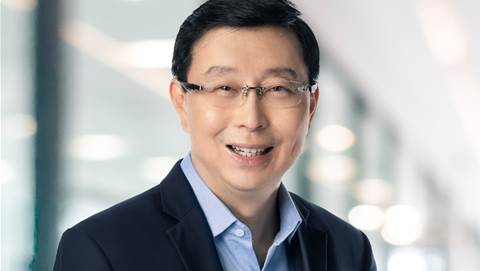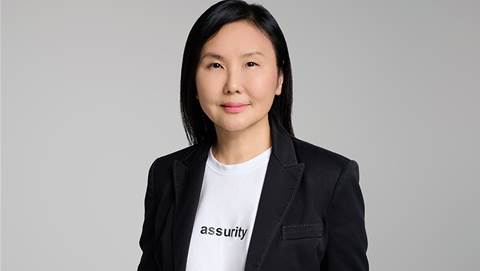The network business has been a key growth driver for Telstra in recent years, with the international business fast gaining strength and now taking a quarter of Telstra Enterprise’s $8 billion revenue.
With the pandemic forcing deep transformative changes across businesses and increasing the need for better network connectivity, the outlook for 2021 and beyond could not be more positive.
To learn more about Telstra’s plans, iTNews Asia sits with Geraldine Kor, recently appointed in January as Managing Director, South Asia and Country Managing Director, Singapore.
Kor, who oversees markets including India, Indonesia, Malaysia, Philippines, Singapore and Thailand and responsible for Telstra’s Australian and New Zealand customers’ international expansion, talks about how she sees digital transformation taking root, how innovation is different across companies and where the growth opportunities are.
iTNews Asia: How has the pandemic changed the prioritisation of technologies and digital transformation, particularly when you compare between pre- and post-COVID?
I previously worked in DXC Technology and back then in 2017, we were already driving digital transformation. The insurance and financial were industries that wanted to transform and the mandate for change was coming mainly from the board. Quite a lot of them failed, because change was either not happening fast enough, or there was a lot of resistance. The IT departments were struggling to work with the line of business.
Many multinational companies in the past few years were on their transformation digital journeys and infrastructures were already in place. When the pandemic hit, the question for them was how to move into cloud? What workloads to move? Do they go hybrid cloud or multi cloud?
A lot of the CIOs that I spoke with have since set up innovation hubs. It was no longer a question of changing the infrastructure because that had been done. Asia is a large enough market and what we are seeing now are applications being driven to the regions.
The pandemic has driven the need for application transformation. When you transform, it needs to impact the business. Where we are seeing now in this big shift is the comfort level. Organisations are saying that they’re now going to transform, not because somebody told them so, but because they have to do it.
iTNews Asia: There are also companies under pressure as tech budgets are cut and having to do more with less. How do you respond to this challenge?
It depends on the industry and how proactive companies are. We have companies straight off the bat at the RFP that tell us they have to cut 10 to 15% off their budgets. They want the savings so they can reinvest in new technologies.
What we started to do with our customers is to take a more proactive approach in terms of the total cost of ownership. We let them know there are technologies complimentary to our portfolio that we can help them with, such as in security or cloud connectivity.
The customer is often appreciative and may even be happier to give us other parts of their IT budgets because of the value we’ve brought them. I think that's important because we are also transforming the customer by not thinking about how we want to protect our revenues.
iTNews Asia: How are the digital native companies and traditional organisations using technology to innovate? How differently are they managing the transformation?
The digital natives just want the bare bones infrastructure. They will do the insourcing themselves. They will hire the smartest people and data scientists. A lot of the innovation is done themselves.
Same for the banks. When they first started, they outsourced everything. Now they’ve decided to insource because their costs are escalating and they don’t want too many providers.
A lot of traditional companies have to outsource, at least initially, because that is the fastest way for them to innovate. Many started their IT journey earlier and have reached enough maturity that they’re comfortable enough to build on their own.
Our customers today are spread across a spectrum – the natives are the most advanced, some maturing companies are starting to innovate on their own and on the other end, we also have some smaller and mid-market customers. They are looking at very simple things, like implementing Office 365 and Mobile 365. These are early steps for them and they want somebody to support them.
iTNews Asia: In December, when you polled your customers 70% of businesses say they're going to invest in digital transformation. Among this number, the cloud came first, second was cyber security and third was remote working. Have these priorities remained?
Looking back, we are in sort of in year two of the pandemic now.
In year one, it was a bit of a mayhem – most were shocked, unsure if the economy was going down or when they will come out of it. The question was ‘Do we throw everything out of the window and do things differently?’
We’re now in year two and in a better state where many can see the economy recovering. IT is no longer a want, but a need.
- Geraldine Kor, Managing Director, South Asia and Country Managing Director, Singapore
We have since also seen two interesting observations. Firstly, companies are doubling down on investments, if they were putting $1 on tech before, they are putting in $2 now. Secondly, Asia has been able to get out of this faster, particularly China and Singapore.
On the cloud, the initial proposition was that you will always lower your costs and you’ve to move everything to the cloud. We've heard from a lot of customers that the cloud is actually not cheaper. In fact, the bill just grows and we're seen a bit of reverse right where some prefer to keep their own private cloud. Many are also taking a multi-cloud approach because they do not want to be beholden to one cloud provider.
To help them, we’re working closer with our partner ecosystem, for instance with AWS and Microsoft. What we're seeing is that they are asking providers like us to help them put an industry lens around it. Because once you move to the cloud, the application becomes very important.
The focus on cyber is not surprising. Customers are requesting for security across all of their portfolio so that's something that we see very strong growth, from consulting to managed services.
The modern workplace (remote working) is the newest and most undiscovered area. Microsoft’s Satya Nadella says this is a $300 billion market. Everyone is trying to figure out and no one is clear on what's the best way. With work from home being the new normal, we’ll see a lot of innovation and a lot of new technologies.
iTNews Asia: Half way into the year, what has become clearer in how your customers are adopting technology? Which industries are leading in transformation and which need more time?
We have network customers who have been with us for a long time. Many are large conglomerates – banks and financial institutions. We run a lot of their networks and it’s important we help them upgrade to SD-WAN or the next generation of technologies.
We also have set of enterprise customers who are not entirely looking at the network, but want to address some of their pain points, for example, in security.
The banking and financial institutions are ahead of the curve. Banks no longer see themselves just as banks but technology companies. The E-commerce companies and digital natives are quite advanced and consume a lot of tech so for them, data is key.
The mining industry is a bit slower to adapt. However the pandemic’s impact on supply chain is accelerating the need for mining companies to transform quicker.
iTNews Asia: You serve a crowded market where there is a lot of competition, including big boys with very deep pockets. How does Telstra Enterprise compete or differentiate?
I came from an SI background so I know what is the (market’s) capacity and scale. However, the opportunities are great because this is a booming industry. We can't completely compete with the global SIs and that is not an area we want to be. We prefer to find pockets, and services is an area where we can add value. Our customers prefer to go with somebody who knows them, and because we've run a lot of their networks, they trust us.
We want to be able to drive areas that are close to the network and to go into new technologies where we can leapfrog. The modern workplace is an example where the market is still undefined and we see huge opportunities there.
iTNews Asia: Does Telstra being Australian provide a challenge when you go against competition from global US companies?
While we see a lot of competition from the US, the way that we've been set up, our CEO has given Telstra International a good level of independence to allow us to innovate. At the same time, we have the advantage and luxury of having our mothership support us on many things.
iTNews Asia: Going forward, where do you see as your priorities and areas you would like to improve?
One of the key driving factors is innovation. I've challenged the team to look at improving the processes in every business function. Secondly, we need to set up the right operating model to serve our customers and not get too mired in the corporate strategy.
From a customer perspective, we are focusing on two tracks: one group working with clients – those who take a lot of our network capacity – to help them transform. Another group looking at newer clients and supporting their growth in areas important for them.
As a goal, we aim to be among the top 3 leading network transformation partners of choice for customers in our region.
.jpg&w=800&c=0&s=1)








